The latest AAP NYC blog post is by Ruoxi (Lydia) Li, a student from the first M.S. AUD ‘24 cohort, for a one-year post-professional program in New York City. In this article, Lydia follows the concept from the previous blog, interviewing more students for a comprehensive understanding of the city. This blog post focuses on the journey students go through in choosing a neighborhood, the real experience of living there, and possible housing recommendations.
For New York, some of us are merely passersby in its glorious history. Yet, for us, our experiences in this city are unparalleled. As Nobel Prize winner Olga Tokarczuk wrote in her book Flights, “Space condenses, unused, undisturbed by any draft, any ruffling of the curtains, and in this motionlessness, trial forms tentatively begin to crystallize, forms suspended for a moment between the floor and the ceiling of the entryway.” The spaces we inhabit carry a fragment of us, so we need to take our dwelling seriously. In this article, you can find how students have chosen to anchor themselves in a particular neighborhood, along with their authentic reactions. Perhaps, as you seek your own spot within New York City’s vibrance, this narrative may offer you a reference.
Brief Introduction
In this article, twelve students from different programs participated in a survey. Among participants, some are newcomers to New York City, embarking on their initial exploration. Others have been residents for over six months, and a few have prior experience studying at the Gensler Family AAP NYC Center.
According to the survey results, most students leave New York City within a year. However, during their brief stays, Manhattan and Brooklyn remain the most preferred boroughs for living, while studying at the Financial District studio. This preference is partly due to their well-developed infrastructure, as well as their rich cultural offerings. As for the specific neighborhood choices, there’s a wide variation, with each individual seeking a personal balance between cost and benefit.
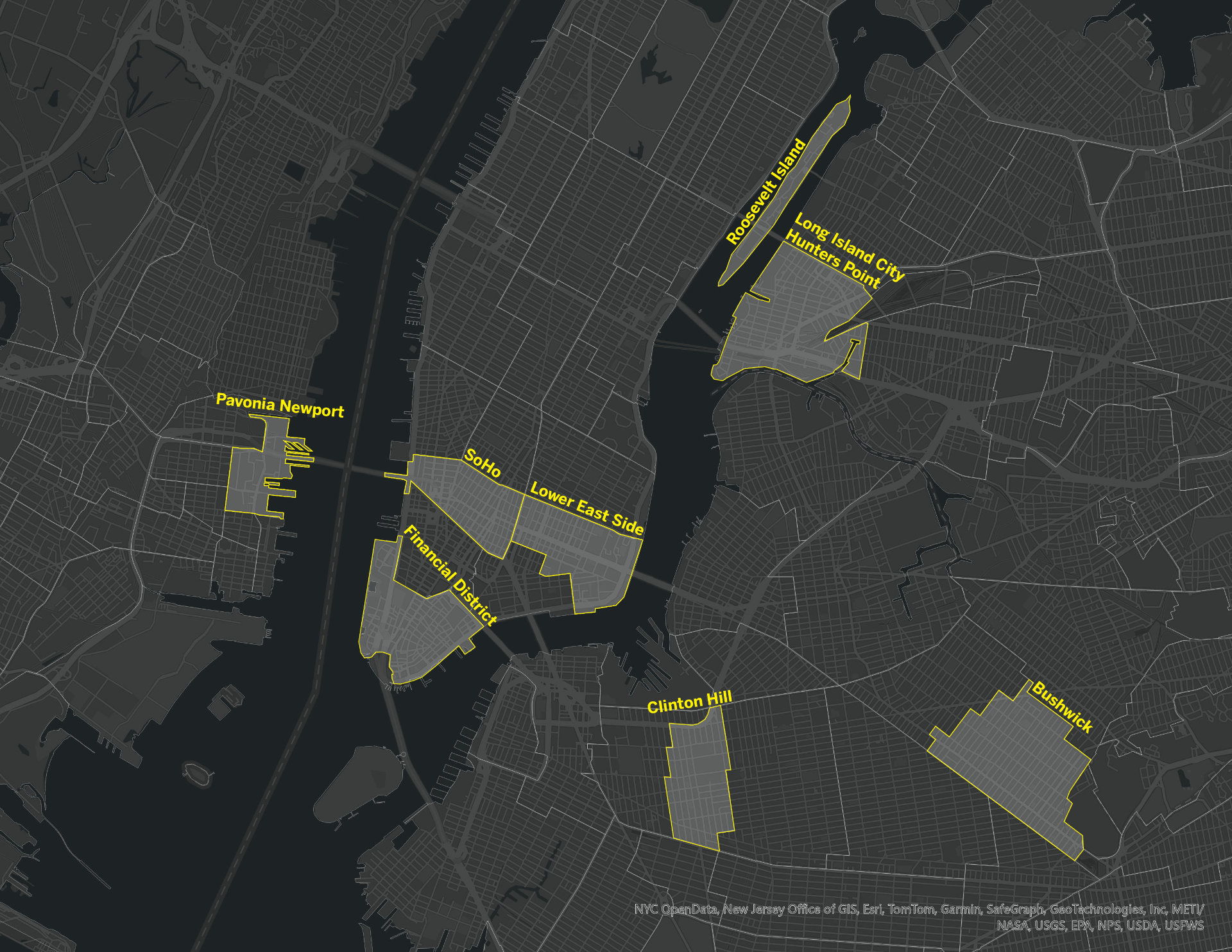
Neighborhood Selection Criteria
When asked about the most valued qualities in selecting a neighborhood, over 70% of students prioritized safety and security features. Cleanliness and maintenance are recognized as one of the most important criteria by more than half of the respondents, as well as access to public transportation.
Surprisingly, proximity to 26 Broadway and access to recreational facilities did not rank high among the top considerations for neighborhood selection. Also according to the survey, most students spend around thirty to forty-five minutes commuting each day, primarily using public transportation. According to the Bureau of Transportation Statistics, people living in Manhattan and downtown Brooklyn have the least average commute time compared to people living in other parts of the city, possibly because of the robust public transportation options.

Neighborhood Profile
After collecting all the information from our students, I compiled the characteristics and ratings of physical amenities for each mentioned neighborhood and generated the following neighborhood profile card.
“Never tired of the hustle and bustle? Stay in Manhattan!”
Financial District
Nestled in Manhattan’s southern tip, the Financial District is not only one of the centers of New York City’s economic prowess but also the home to the current Gensler Family AAP NYC Center.
Skyscrapers housing corporate giants stand alongside historic landmarks, creating a skyline that is iconic worldwide. The area is also rich in cultural attractions, from the 9/11 Memorial & Museum to Wall Street. Living in the Financial District means experiencing the energetic pulse of the city’s commerce by day and enjoying its transformation into a surprisingly peaceful enclave by night. Public events happen frequently in the Financial District, ranging from political protests to cultural celebrations.
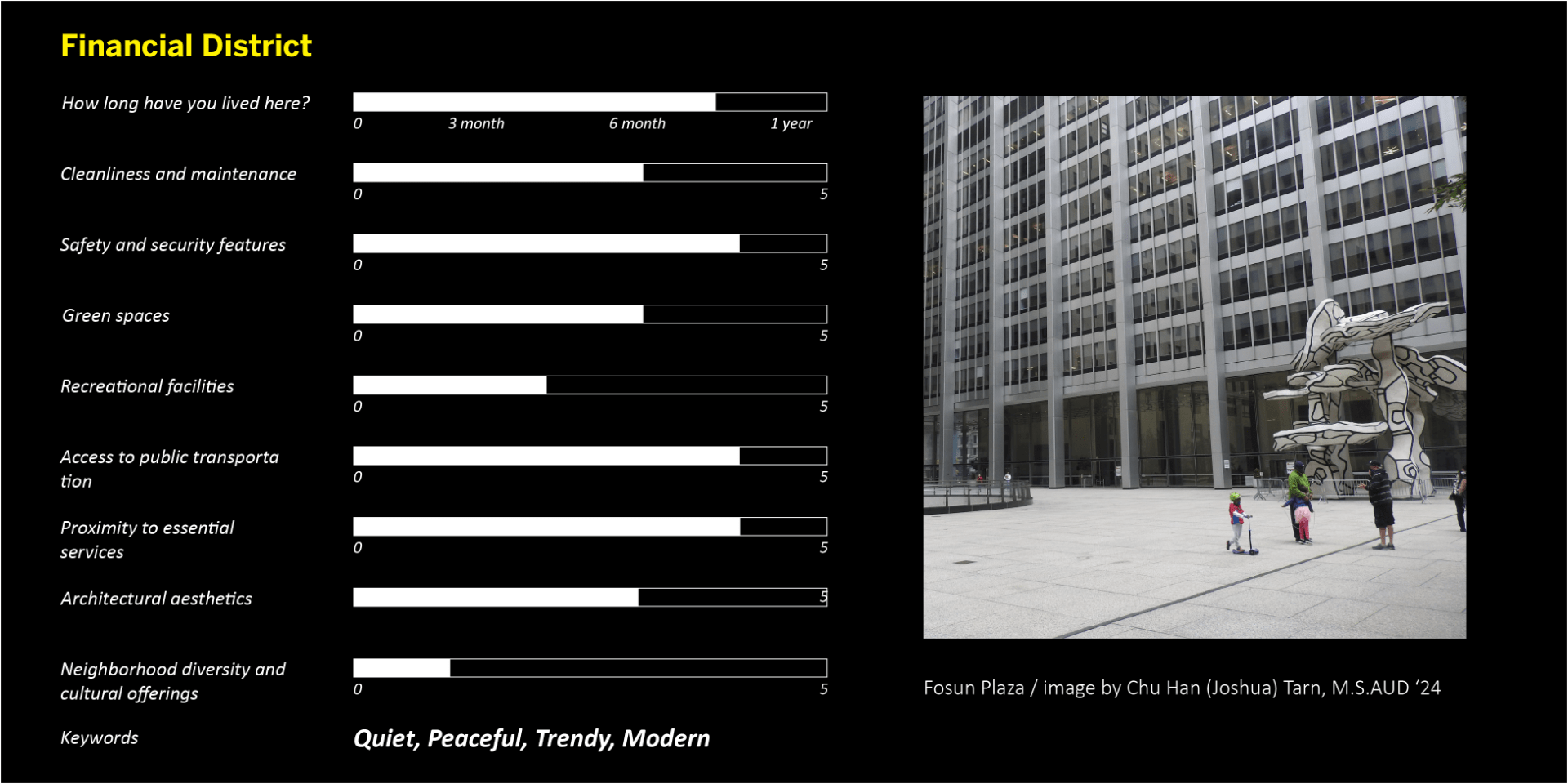
SoHo
SoHo is one of the oldest and most trendy neighborhoods in Lower Manhattan. Once an industrial zone, it transformed in the 1960s and 1970s when artists began converting loft spaces into studios, making the neighborhood known for its artistic heritage, cast-iron architecture, and cobblestone streets. For instance, the New York Earth Room, created by Walter De Maria, is one of many art pieces scattered throughout SoHo.
Today, SoHo is synonymous with fashion, art galleries, and upscale dining. Bumping into celebrities is nothing new for the residents of this neighborhood. Nevertheless, it retains an air of its bohemian past. Living here means embracing Manhattan’s essence, both the better and worse aspects of it. One can get everything one needs within walking distance, but the crowded and chaotic scene can make it hard for one to find peace.

Two Bridges and Chinatown Neighborhoods
The Two Bridges area, framed by the Brooklyn and Manhattan Bridges, celebrates the rich heritage and diverse cultural mix. This neighborhood offers a unique blend of old-world allure and contemporary vibrancy, with traditional markets, family-owned eateries, and cultural centers thriving among its streets. Every year, the Museum at Eldridge Street hosts the Egg Rolls, Egg Creams, and Empanadas Festival along the Chinatown, Two Bridges, and Lower East Side border. It aims to educate and highlight the Chinese, Jewish, and Puerto Rican traditions and communities, hosting music performances and various activities for people to connect with each other.
Unlike SoHo or the Financial District, Chinatown still retains an intimate residential atmosphere. Retail stores and street stalls fill up the district, complemented by Columbus Park and Seward Park. These public spaces echo the community’s cultural events and traditions.
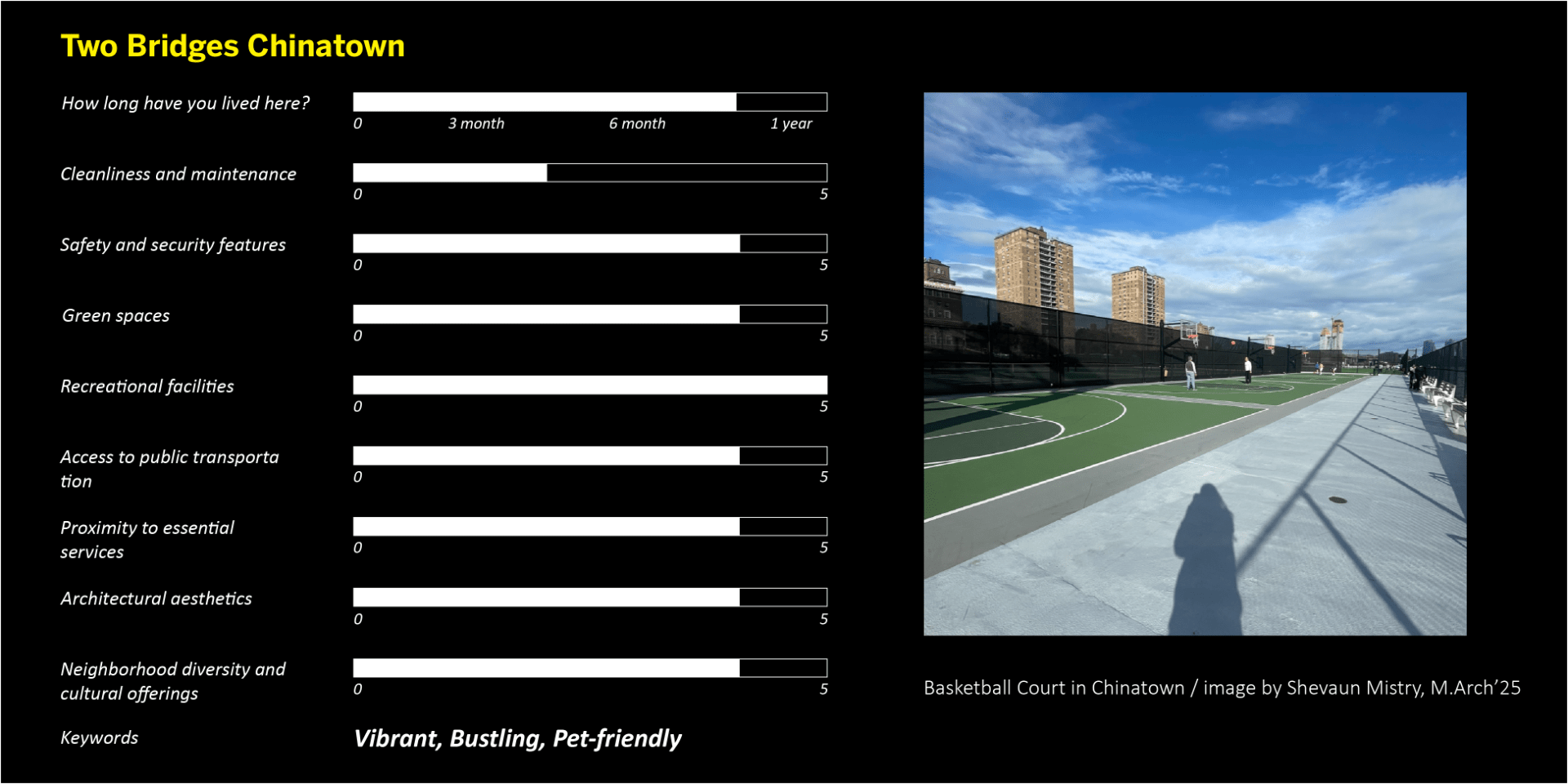
Roosevelt Island
Roosevelt Island, a slender oasis of land in the East River between Manhattan and Queens, hosts the innovative Cornell Tech campus and is also home to the Gensler Family AAP NYC Center. Renowned for panoramic Manhattan skyline views and tranquil green spaces, it offers a peaceful city retreat.
Access is available via the iconic Roosevelt Island Tramway, subway, and the Astoria Ferry Route, linking it closely with Manhattan. Moreover, there is a free shuttle bus service navigating within the island. Notably, the absence of chain grocery stores is a quirk. One has to go to Queens, Manhattan, or a thirteen-minute walk up Roosevelt Island’s Main Street from the TATA studio if one is planning for a bulk purchase.

“A fan of the vibrant, artsy vibe? Come to Brooklyn!”
Bushwick
Bushwick, further east of northwest Brooklyn, has transformed from an industrial, working-class area to a vibrant cultural hub. Being the home to multiple art institutions such as Luhring Augustine Gallery and the Paper Box, Bushwick is becoming an increasingly popular destination for artists, musicians, and young professionals looking to settle down.
The neighborhood features a mix of historic brownstones and recent developments, reflecting its evolving identity. However, Bushwick’s rise has also sparked gentrification, shifting its demographic landscape, making it less affordable than before. Additionally, students have reported seeing large flocks of crows during their stay. Apparently, they often congregate in groups, staring down at pedestrians from tree branches, and their sudden loud calls can startle them unexpectedly.
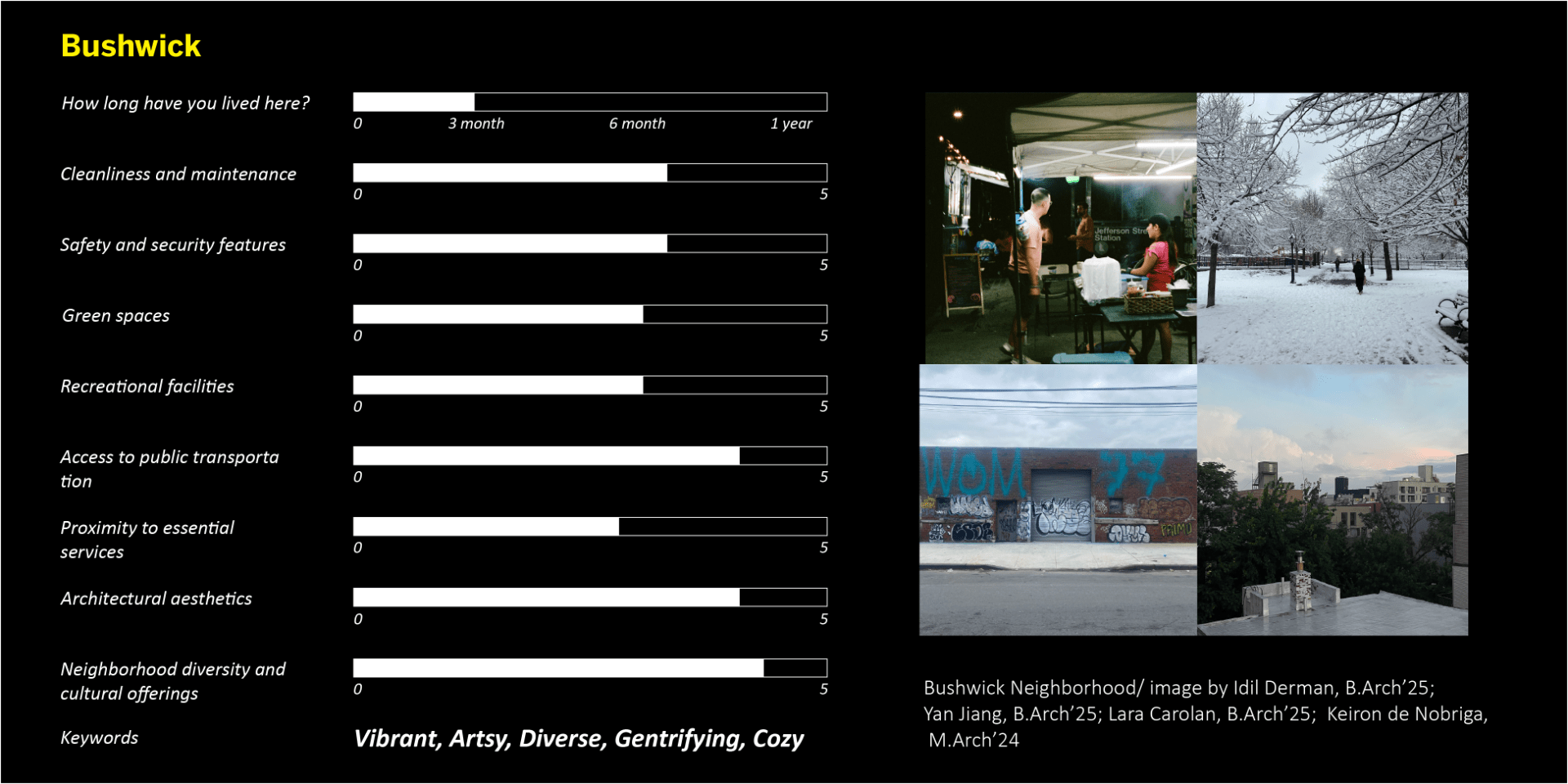
Clinton Hill
Located in north-central Brooklyn, Clinton Hill is a small neighborhood with a great mixture of 19th-century mansions and artistic atmosphere. The streetscape generally represents the classic Brooklyn brownstone typology, with plenty of green spaces like Prospect Park, giving a feeling of retreat away from the busy streets of Manhattan.
Clinton Hill is adjacent to Pratt Institute and other schools, making it a good choice for students to reside around Myrtle Avenue. Clinton Hill is bordered by Bed-Stuy, Prospect Heights, and Fort Greene, providing convenient access to the A, C, and G trains. However, a former resident noted that the G train’s infrequent schedule, running only once every twenty minutes, can be a minor inconvenience. Rest assured, the A and C trains operate regularly, ensuring smooth travel from Clinton Hill to your destination.

“Want a break from the busy scene? Jersey City is a perfect choice.”
Jersey City
As mentioned in the previous blog, Jersey City presents a viable living option for those commuting to midtown or downtown Manhattan. With New York across the river, Jersey City offers a more serene, peaceful, and safe neighborhood atmosphere. For those who value affordability (and lower taxes), Jersey City is an appealing option close to lower Manhattan. For those reasons, after graduation, some students find Jersey City convenient when they begin their careers in New York City.
Based on the survey, the students living in Jersey City felt a lack of cultural and recreational activities compared to the kerfuffle of midtown Manhattan. Though one is merely a ten-minute commute away from downtown Manhattan, living in Jersey City does not allow one to declare oneself as an official New Yorker, but you’ll become an honorary one anyway!
The following apartments are noteworthy considerations from current students living in Jersey City: Emerald, Waterside sq, Pacific, Atlantic, Parkside East, Parkside West

“Accessible yet more affordable? Welcome to Queens!”
Long Island City
Rezoned in 2001, Long Island City (LIC) has shifted from a manufacturing-intensive district to a more diverse zone with residential, commercial, and industrial programs. Over the past decades, Long Island City has become a popular choice among students due to its affordable rental prices and an inclusive attitude towards diverse cultures. Thanks to a well-developed public transportation system, traveling from the heart of LIC to both downtown and uptown Manhattan is very convenient.
For those who are looking for access to Roosevelt Island and Astoria, this neighborhood is a worthwhile consideration. The following apartments are highlighted by current students living in Long Island City: Tower 28, Sven, Alta, Hayden
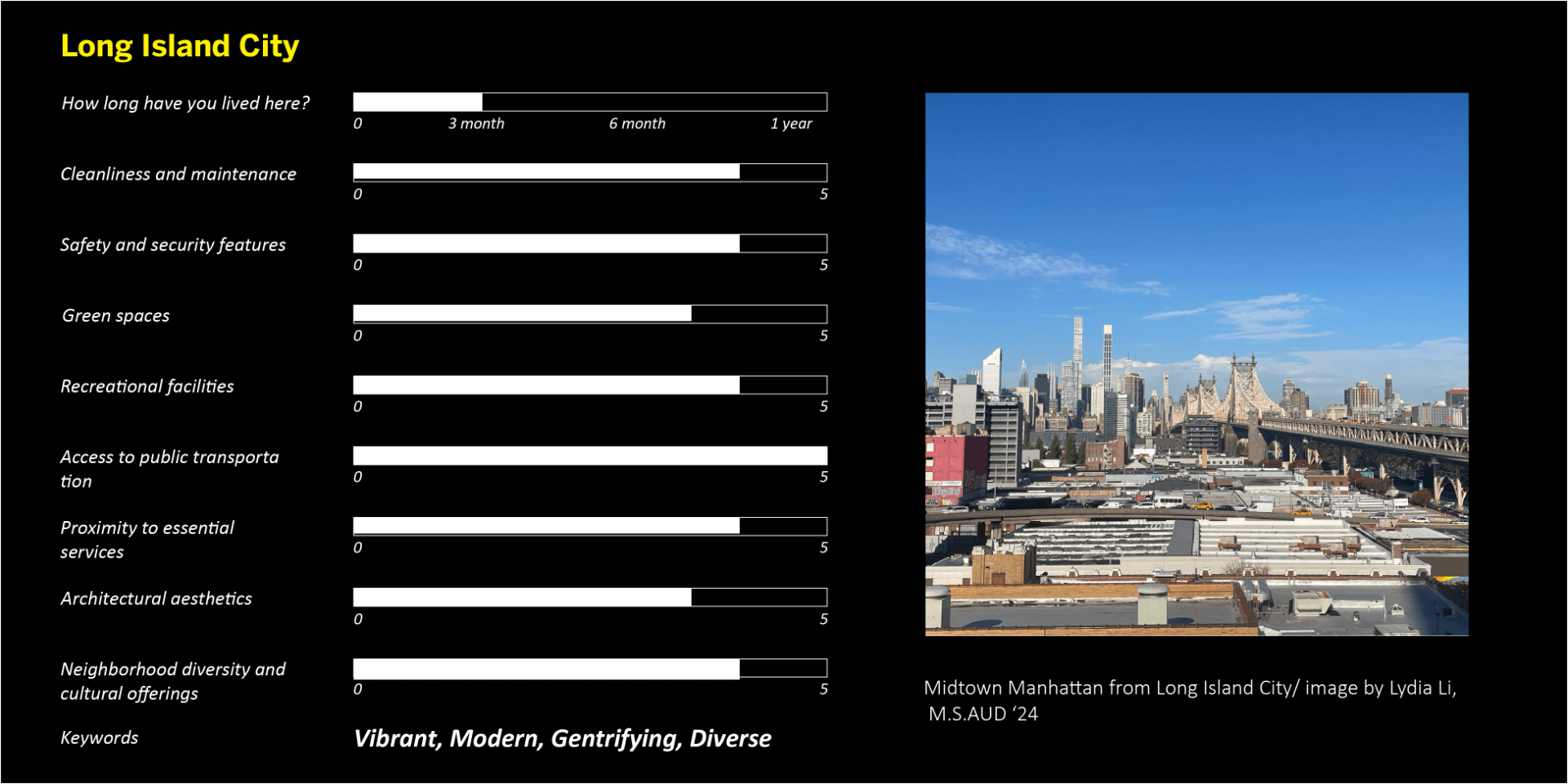
South Ozone Park
You might not be familiar with the name South Ozone Park, but you have surely crossed paths with this neighborhood on your way to JFK Airport. The name “Ozone Park” harks back to the 19th century. Born from residents’ desire to escape the overwhelming car exhaust-smothered Manhattan atmosphere, Ozone Park was a retreat for better air quality.
Today, the construction of JFK Airport makes South Ozone Park a never-ending noisy neighborhood, compromising its former tranquil character. For photographs of South Ozone Park, you can check out this link from an ambitious Queens-based photographer.
Despite the airport-related noise, South Ozone Park is a family-friendly and affordable neighborhood. With Rockaway Boulevard as a major commercial strip, this neighborhood also has a collection of small businesses and local shops. If a lengthy commute isn’t a concern for you, then this neighborhood could be a viable option.
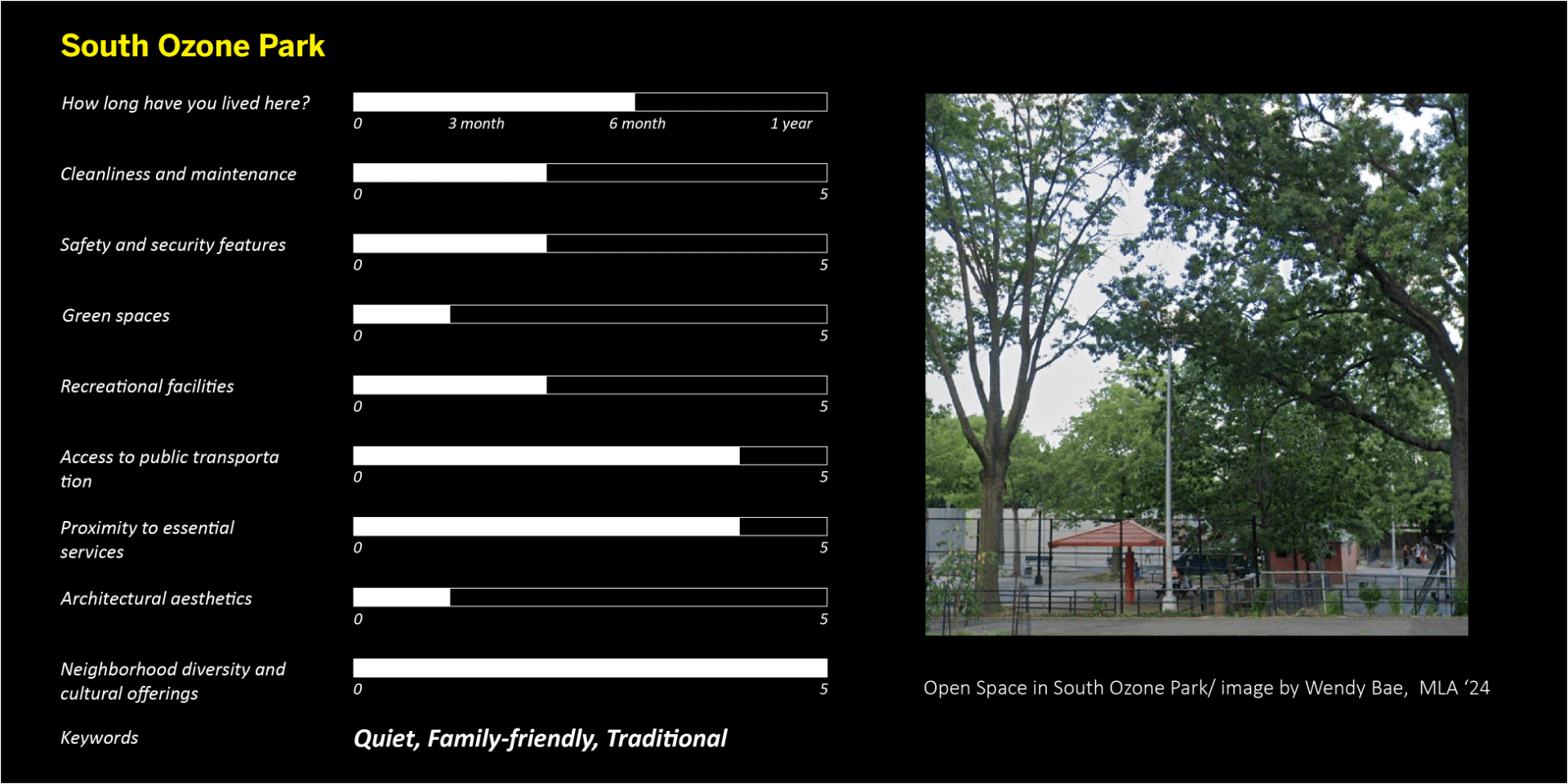
Housing Resources
In the final part of my data collection, I gathered information on how students found their rental accommodations. More than half discovered their current residences through recommendations from peers or families.
However, since many students are only looking for short-term furnished stays, it is worthwhile to review the school’s housing resource list and to attend housing-related conversations before coming to New York. In addition, reviewing availability for desired accommodations in advance and proactively contacting resources can be reassuring. Previous students have lived in institutional housing options such as Educational Housing Service, International House, 92NY Residence, and Found Study.
